Two Steps Solution.
Some of the answers here are complicated for me to understand. I will try to add one more answer in an attempt to simplify the way how to look at this.
Short Answer:
Example 1:
7 % 5 = 2
Each person should get one pizza slice.
Divide 7 slices on 5 people and every one of the 5 people will get one pizza slice and we will end up with 2 slices (remaining). 7 % 5 equals 2 is because 7 is larger than 5.
Example 2:
5 % 7 = 5
Each person should get one pizza slice
It gives 5 because 5 is less than 7. So by definition, you cannot divide whole 5items on 7 people. So the division doesn't take place at all and you end up with the same amount you started with which is 5.
Programmatic Answer:
The process is basically to ask two questions:
Example A: (7 % 5)
(Q.1) What number to multiply 5 in order to get 7?
Two Conditions: Multiplier starts from `0`. Output result should not exceed `7`.
Let's try:
Multiplier is zero 0 so, 0 x 5 = 0
Still, we are short so we add one (+1) to multiplier.
1 so, 1 x 5 = 5
We did not get 7 yet, so we add one (+1).
2 so, 2 x 5 = 10
Now we exceeded 7. So 2 is not the correct multiplier.
Let's go back one step (where we used 1) and hold in mind the result which is5. Number 5 is the key here.
(Q.2) How much do we need to add to the 5 (the number we just got from step 1) to get 7?
We deduct the two numbers: 7-5 = 2.
So the answer for: 7 % 5 is 2;
Example B: (5 % 7)
1- What number we use to multiply 7 in order to get 5?
Two Conditions: Multiplier starts from `0`. Output result and should not exceed `5`.
Let's try:
0 so, 0 x 7 = 0
We did not get 5 yet, let's try a higher number.
1 so, 1 x 7 = 7
Oh no, we exceeded 5, let's get back to the previous step where we used 0 and got the result 0.
2- How much we need to add to 0 (the number we just got from step 1) in order to reach the value of the number on the left 5?
It's clear that the number is 5. 5-0 = 5
5 % 7 = 5
Hope that helps.
